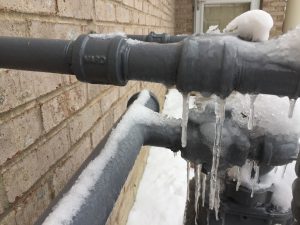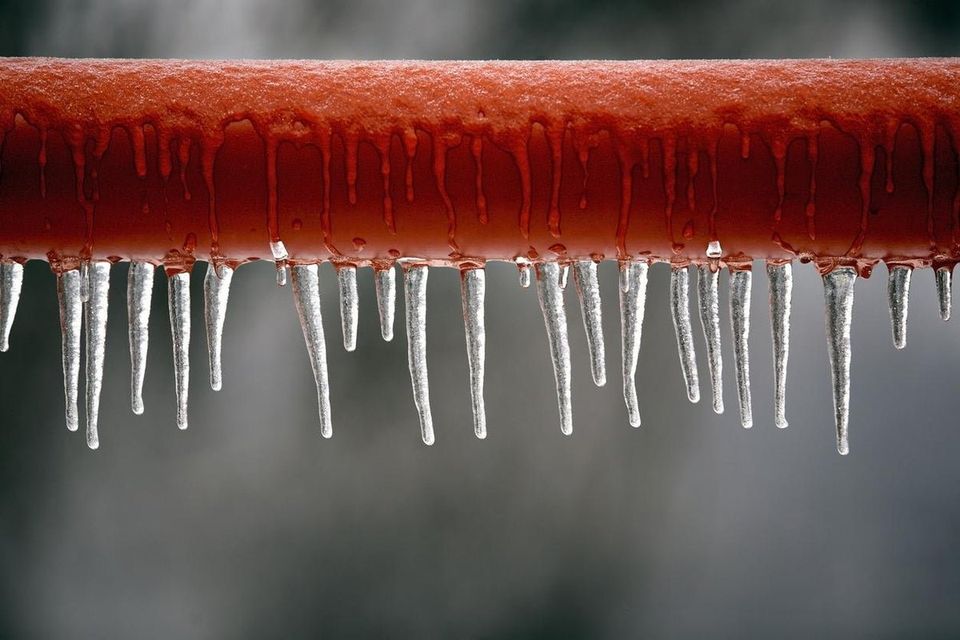Each person seems to have their unique opinion involving Preventing and dealing with frozen pipes.

Cold weather can damage your pipes, specifically by freezing pipelines. Here's just how to stop it from taking place and what to do if it does.
Introduction
As temperatures decline, the danger of icy pipes boosts, possibly bring about costly fixings and water damages. Understanding exactly how to stop icy pipes is critical for property owners in chilly environments.
Avoidance Tips
Insulating vulnerable pipes
Cover pipes in insulation sleeves or make use of warm tape to shield them from freezing temperatures. Focus on pipelines in unheated or exterior locations of the home.
Home heating strategies
Maintain indoor areas adequately heated, specifically areas with plumbing. Open closet doors to enable warm air to flow around pipes under sinks.
How to recognize icy pipelines
Try to find decreased water flow from taps, unusual odors or noises from pipes, and visible frost on subjected pipes.
Long-Term Solutions
Architectural modifications
Think about rerouting pipelines away from exterior wall surfaces or unheated locations. Add additional insulation to attic rooms, basements, and crawl spaces.
Upgrading insulation
Buy high-quality insulation for pipelines, attic rooms, and walls. Appropriate insulation assists preserve consistent temperatures and minimizes the danger of icy pipelines.
Safeguarding Outside Pipes
Yard hose pipes and outdoor faucets
Detach and drain garden pipes before winter months. Install frost-proof faucets or cover outdoor taps with protected caps.
Comprehending Frozen Pipes
What creates pipelines to ice up?
Pipelines freeze when revealed to temperatures below 32 ° F (0 ° C) for extended periods. As water inside the pipes freezes, it increases, taxing the pipeline walls and possibly creating them to break.
Threats and problems
Frozen pipelines can bring about supply of water disturbances, building damages, and costly repairs. Ruptured pipelines can flood homes and trigger comprehensive architectural damage.
Signs of Frozen Pipeline
Determining frozen pipelines early can avoid them from rupturing.
What to Do If Your Pipelines Freeze
Immediate actions to take
If you suspect icy pipes, maintain taps open up to ease stress as the ice melts. Utilize a hairdryer or towels taken in warm water to thaw pipelines gradually.
Verdict
Preventing frozen pipelines calls for proactive measures and quick feedbacks. By recognizing the causes, signs, and preventive measures, home owners can secure their pipes throughout winter.
5 Ways to Prevent Frozen Pipes
Drain Outdoor Faucets and Disconnect Hoses
First, close the shut-off valve that controls the flow of water in the pipe to your outdoor faucet. Then, head outside to disconnect and drain your hose and open the outdoor faucet to allow the water to completely drain out of the line. Turn off the faucet when done. Finally, head back to the shut-off valve and drain the remaining water inside the pipe into a bucket or container. Additionally, if you have a home irrigation system, you should consider hiring an expert to clear the system of water each year.
Insulate Pipes
One of the best and most cost-effective methods for preventing frozen water pipes is to wrap your pipes with insulation. This is especially important for areas in your home that aren’t exposed to heat, such as an attic. We suggest using foam sleeves, which can typically be found at your local hardware store.
Keep Heat Running at 65
Your pipes are located inside your walls, and the temperature there is much colder than the rest of the house. To prevent your pipes from freezing, The Insurance Information Institute suggests that you keep your home heated to at least 65 degrees, even when traveling. You may want to invest in smart devices that can keep an eye on the temperature in your home while you’re away.
Leave Water Dripping
Moving water — even a small trickle — can prevent ice from forming inside your pipes. When freezing temps are imminent, start a drip of water from all faucets that serve exposed pipes. Leaving a few faucets running will also help relieve pressure inside the pipes and help prevent a rupture if the water inside freezes.
Open Cupboard Doors
Warm your kitchen and bathroom pipes by opening cupboards and vanities. You should also leave your interior doors ajar to help warm air circulate evenly throughout your home.

I recently found that review on 6 Ways to Prevent Frozen Pipes when surfing around the internet. In case you enjoyed our blog entry please don't forget to share it. Bless you for being here. Please check up our website back soon.
Click Here